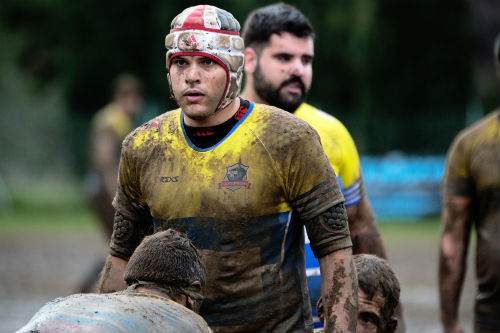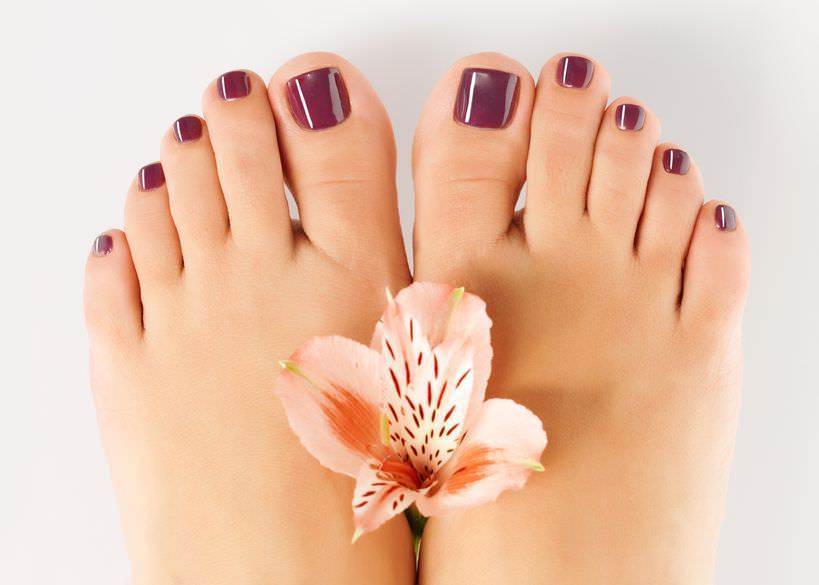Do You Need Orthotics? Orthotic Guide
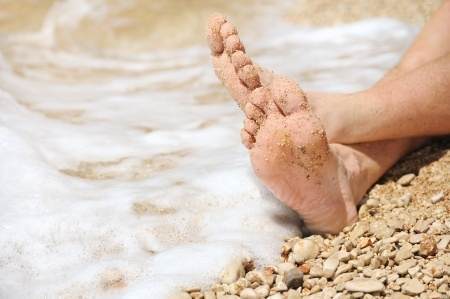
Do you have foot pain?
Have you been to your physiotherapist or chiropractor and been told you need orthotics?
Have you wondered if you need custom-made orthotics?
In this article, I give you the essentials to determine if you need orthotics and what to look for when a healthcare practitioner examines you for orthotics.
I don’t want you to be passive. I want you to be informed and know whether your health practitioner is doing a good job or not. Knowing the key points will allow you to ask pertinent questions, look for the key tests by your health practitioner and determine if they are competent. This is how I want to empower you.
First, let’s figure out if you need orthotics.
Please answer yes or no to each of these questions.
- Do you have a foot that rolls in or out while walking? Many people’s feet roll in and flatten out while walking.
- Do you have painful feet like bunions, plantar fasciitis, or heel spurs?
- Do you get corns and calluses near your big toe and little toe?
- Do you have one leg that is shorter than the other?
- Do you have knock knees or bow legs?
- Do your shoes wear out before they are 4 months old?
- Does one shoe wear out in a different pattern compared to the other?
- Are your feet turned in or out?
- Do you have metatarsalgia, Morton’s neuroma, claw or hammer toes?
- Do you have shin splints?
Answering yes to these questions doesn’t necessarily mean you need orthotics but if you answered yes to more than 2 increases the likelihood of needing orthotics increases.
What kind Of Foot Arch Do you Have?
- Get some paint or water and put it in a container large enough so one foot will fit.
- Get some thick paper ready that is large enough for an imprint of your foot.
- Stick one foot in the paint or water and stand on the piece of paper.
- Look at the imprint your foot has made.
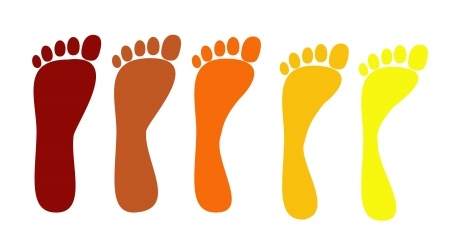
Now look at the type of imprint your foot has made and compare them to the picture above. The picture shows a spectrum of feet from the very flattest feet to feet that have high arches.
The red imprint represents a foot that has a flat arch. If you have this type of foot arch you will be prone to plantar fasciitis, heel spurs, bunions, etc.
See Also: Keep The Bunion Surgeon Away
The orange imprint is a normal foot.
The yellow imprint represents a foot that has a high arch. If you have this type of foot your foot is rigid with poor shock absorption. Your foot would be prone to plantar fasciitis and shin splints to name a few foot problems.
If you are at either end of the spectrum, likely you will need orthotics.
Postural Assessment For Orthotics
Did your health provider assess your posture? Especially around the pelvis.
Why would a health provider assess your pelvic posture if you need orthotics? The kinetic chain. (Basically, the bones are all connected affecting one another). Remember that song about “Dem Bone”
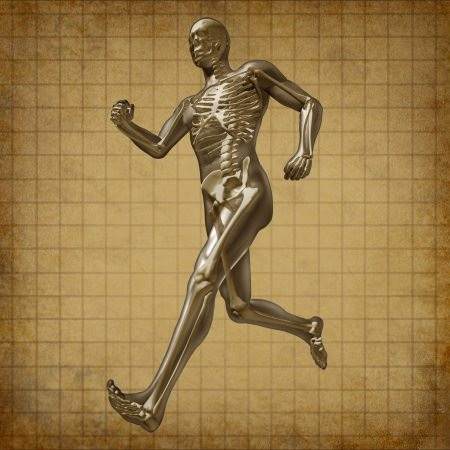
- The toe bones connected to the foot bone,
The foot bones connected to the ankle bone,
The ankle bones connected to the leg bone,
The leg bones connected to the knee bone,
The knee bones connected to the thigh bone,
The thigh bones connected to the hip bone,
The hip bones connected to the backbone,
With everything connected when you move one part the other parts move. So a flat foot can cause this chain reaction.
- Flat feet >>leg rotates inward>>thigh bone rotates inward>> low back pain
The flat feet cause the legs to rotate inward which then makes your femur (thigh bone) rotate inward. This stretches ligaments, and muscles and puts a rotary torque like the force you put when trying to open a jar of jam. Done for long enough or with enough force, the rotary torque (rotation force) pulls on the hip and lower back and causes lower back pain or hip pain.
Your pelvis can also can also cause a chain reaction causing flat feet.
- Butt sticking out posture >> thighs rotate inward>>Leg rotates in >>flat feet
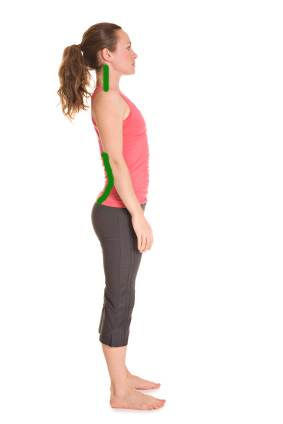
With pelvic-related flat feet, you start with your butt sticking out. Sticking your butt causes your femur (thigh bone) to rotate inward which rotates your lower leg inward.
When your lower leg rotates this puts more pressure on the medial arch (arch at your in-step). Give it enough time and you will get flat feet. Flat feet can then cause heel spurs, plantar fasciitis, bunions and more.
Most health practitioners don’t check your posture so they wouldn’t know if your flat feet are coming from your hip or if you simply have fallen arches.
The treatments should be quite different. If the problem originates in the pelvis then you shouldn’t be getting orthotics. You should be getting your pelvis treated and correcting your posture.
See also: Correct The Exaggerated Curve In Your Low Back
Flat feet that originate in the foot may be a good indication for custom-made orthotics.
Home Exercises
Whichever health practitioner you choose, after they have diagnosed the cause of your flat feet or pain they should give you the appropriate exercises.
If you have flat feet related to your pelvis your chiropractor should give you the appropriate pelvic exercises. If you have foot problems that stem from the foot itself then the appropriate foot exercises are in order.
Ask your health practitioner for the exercises. If they can’t or won’t show the exercises move on to someone who will.
Be Wary Of “Custom Orthotics” At Trade Shows, Booths, Malls and Internet Sites
I have seen companies at trade shows with gait scans (scans for the feet to show the way you walk) which are very impressive. They offer great visual feedback and can show where there is more pressure on the foot.
Some of the gait scans used are technically good but the problem is that the orthotics offered at these trade shows in my experience have all been off the shelf. They are not custom-made orthotics.
I have seen some Toronto-based trade shows use a gait scan to get the size of your foot then take an off-the-shelf “orthotic” then use a grinding machine to score the bottom of the “orthotic” to make it custom.
I think this is great if you are paying $40-50. This is fraud if they are being passed off as custom orthotics. Most of these off-the-shelf orthotics are between $300-$500.
The worst part is that if you need any modifications down the road you have no way to do this. Good luck with any returns.
Are Your Orthotics Custom Made?
- First, take the orthotics and put it on a hard surface Using your thumb, push as hard as you can against the medial arch (that bump sticking out on one side). The arch should not bend against the pressure of your thumb as the arch would not be strong enough to hold up the arch of your foot.
- Put your foot on the orthotic then go up on your tippy toes. This increases the arch height of your foot. If there is a gap between the orthotic and the foot chances are the orthotic is not custom-made to your foot. You should not be able to stick a finger between the orthotic and the foot.
If you find these tests to be positive ie. they don’t pass, then you likely have been duped.
Tell us what you think in the comments below and like us on Facebook. This Toronto Downtown Chiropractor will answer all questions in the comments section.






